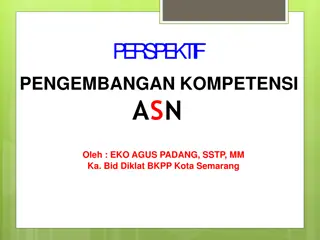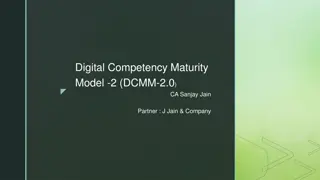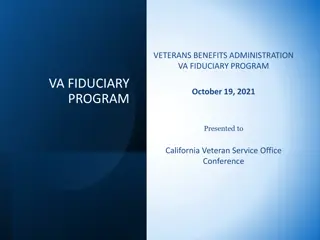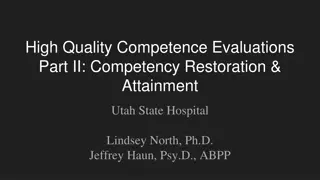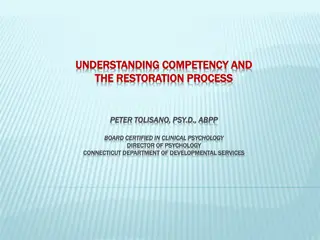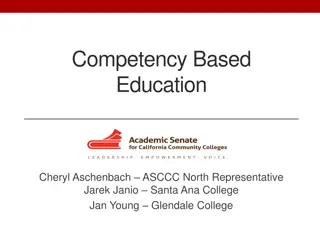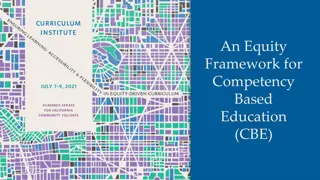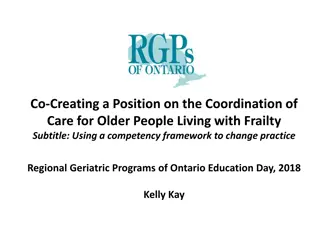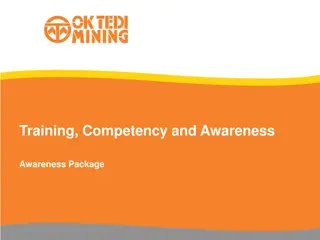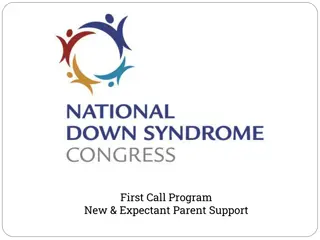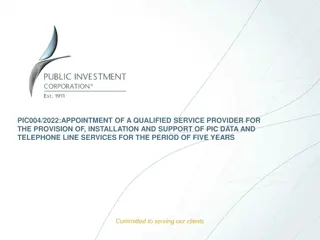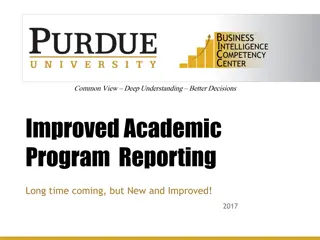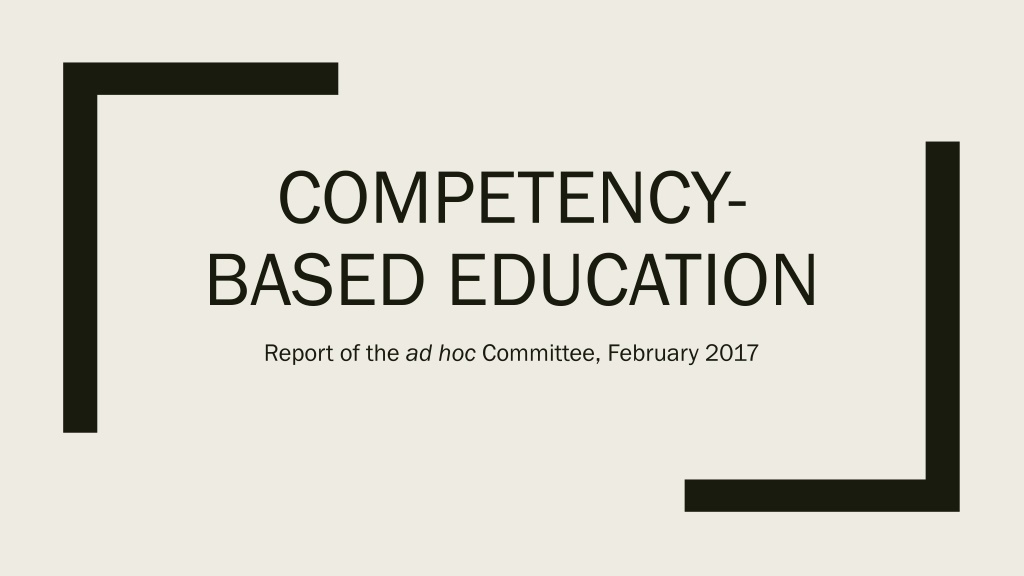
Innovative Competency-Based Education Insights
Discover the concept of Competency-Based Education (CBE) and its impact on student success, personalized learning, and assessment strategies. Uncover the diverse models of CBE, its pros and cons, and the committee's recommendations regarding academic credit for CBE at Auburn University in February 2017.
Download Presentation

Please find below an Image/Link to download the presentation.
The content on the website is provided AS IS for your information and personal use only. It may not be sold, licensed, or shared on other websites without obtaining consent from the author. If you encounter any issues during the download, it is possible that the publisher has removed the file from their server.
You are allowed to download the files provided on this website for personal or commercial use, subject to the condition that they are used lawfully. All files are the property of their respective owners.
The content on the website is provided AS IS for your information and personal use only. It may not be sold, licensed, or shared on other websites without obtaining consent from the author.
E N D
Presentation Transcript
COMPETENCY- BASED EDUCATION Report of the ad hoc Committee, February 2017
Committee Charge and Membership Charge: to study whether it would recommend that Auburn University take the necessary steps to begin offering academic credit for competency-based education. to issue a final report that includes either a recommendation to proceed, identifying specific degree programs that would appropriately be served by a CBE option; or a recommendation not to pursue CBE at this time. Committee Members: Constance Relihan, APUS, Chair Shawndra Bowers, AuburnOnline Katie Boyd, Office of Academic Assessment Toni Carter, RBD Library Elaine Coleman, CVM Tony Cook, Extension/4-H Erica D. Kierce, Nursing Jimmy Lawrence, HCOB Margaret Marshall, Office of University Writing Donald Mulvaney, Agriculture Kelley M Noll, Nursing
What is CBE? Outcomes Outcomes- - or Performance or Performance- -based based Student success is measured by mastery of individual learning outcomes, not by completion of a Carnegie-unit based course Personalized and Adaptive Personalized and Adaptive Because student learning is based upon mastery of individual outcomes, a program can be tailored to the specific needs of each student Formal Definitions in flux Formal Definitions in flux Definitions and strategies for assessing CBE programs are not fixed
CBE Models Direct Assessment Direct Assessment Completion of the program is based entirely upon mastery of individual learning outcomes. It is self-paced. Blended Approach Blended Approach Competencies used as gateway to assess credit for prior learning (PLA) and determine starting point. Traditional course structures used for additional credit/program completion. Carnegie Carnegie- -Hour Based Hour Based Operate as traditional programs, but competency mastery is incorporated into course structures. Digital Badges & Digital Badges & Microcredentials Microcredentials Online record of achievement. Usually distinct from credit-bearing activities. (See EAB, 2014)
Pros and Cons Pros Pros Cons Cons Flexible Infrastructure needs/costs Financial savings for the right student Substantial faculty commitment in curriculum development Online delivery extends campus reach Regulatory issues SACSCOC & DOE Potential overloading of academic resource capacity Possible links to employer/industry needs Staffing unbundling of distinct roles may be costly and may undermine traditional faculty roles. Unbundling of faculty roles may lead to cost savings and increased focused expertise
Recommendations the committee does not recommend the creation of the purest forms of CBE, which would require institutional-level support and have a mostly negative impact on existing university units such as the Registrar, the Miller Writing Center, and academic support units; CBE in its purest form would create complications for institutional accreditation and student financial aid eligibility with little evidence of improvement in student success or financial benefits. The committee also found no demonstrated interest in or need for such programs on the Auburn University campus. (See Report, p. 2)
But The committee was more neutral, however, about CBE-type teaching strategies or hybrid programs that might be developed by programs interested in pursuing them. Hybrid versions of CBE, including credit by exam or other Prior Learning Assessment (PLA) programs, also carry with them costs and consequences that should be carefully considered before they are proposed. Online learning or short-term instruction (like workshops) that do not result in a degree or official credit-bearing certificate may be better solutions to meet specific needs, and mechanisms for offering such limited-scope instruction are already available to departments and academic support units. (See Report, p. 2)
If If a Department wants to develop a CBE program, consider . . . 1. The relationship between the proposed competency-based education and the institution s mission. 2. The on- and off-campus approval process. 3. The needs of prospective students. 4. Faculty control of the program. 5. Cost. Up-front investment will be needed. 6. Current developments in the field. Understanding of CBE is rapidly evolving. (Start by reading our report.)

